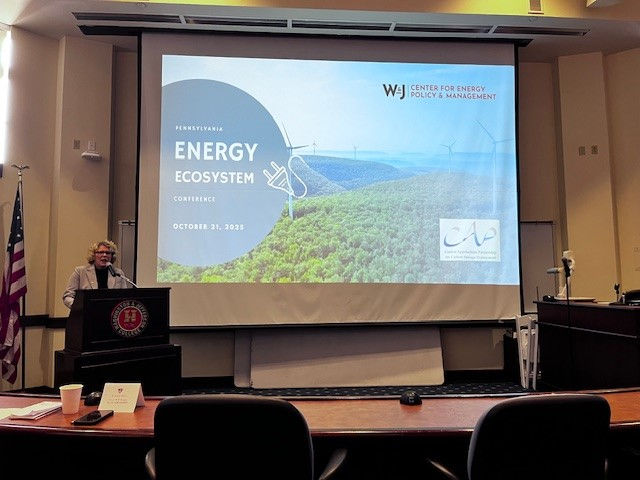Opportunities, Challenges Abound in Pa. Data Center Development
- Linda Ritzer
- Apr 15
- 3 min read
Pennsylvania is seeing a sharp increase in companies looking for locations to build huge data centers and trying to find ways to compete with nearby states in attracting these energy-hungry facilities.
The Center for Energy Policy and Management’s recent “Energy, Economy, and AI: Data Centers and Pennsylvania’s Future” webinar brought a number of issues surrounding development into sharper focus, and highlighted the opportunities and challenges these operations present, as well as the need for municipal governments to think about land use considerations. The webinar recording can be viewed here.
Speakers Esch McCombie, an attorney with McNees Wallace & Nurick LLC, and Lisa Riggs of Team Pennsylvania explained that data centers are large warehouse-style buildings that house huge amounts of information technology infrastructure for building, running, and delivering computerized applications and services. They come in many sizes, but recently large data users like Meta and Amazon that are involved in the development of artificial intelligence have been looking to build “hyperscale” projects that demand huge amounts of readily available electricity.
Riggs noted that Pennsylvania is seeing increased interest because of its abundance of energy sources. Pennsylvania is the top net exporter of electricity to other states, and she said other nearby states like Ohio and Virginia that are seeing strong growth in data centers being powered partly with this state’s energy. Pennsylvania must become more competitive, she said, but one challenge is the lengthy permitting process compared to other states.
McCombie outlined the locational considerations for companies seeking to build data centers, with available, around-the-clock power being the first consideration. Developers also look for sites with readily available water supplies for cooling equipment, and a location near a population center with available fiber optic cable to reduce “latency” or lag in the flow of information. Less important considerations include flat land, low environmental and natural hazards, and incentives.
“The locational decision at this point is a race for power,” Riggs said. Pennsylvania now has about 78 data centers planned or in operation, with more projects being announced almost weekly. Large data companies are racing to find locations with available power to get their project into the queue for approval to connect to the electric grid. Alternately, a number of them are finding locations where they can co-locate with an energy source, and tie in directly for power, bypassing the grid.
McCombie outlined a number of economic benefits to data center development, including large property tax windfalls for school districts, municipal, and county governments. He pointed to one proposed project in central Pennsylvania that could generate an annual $65 million for local entities. At the same time, because data centers employ just 20 to 40 well-paid skilled workers, few new student demands are placed on school districts and there is little new traffic. New surrounding industries also develop in the area.
Riggs said that economic development officials often focus on job creation, but in the case of data centers, tax revenue and job quality could be seen as the benefits.
Riggs touched on the “very, very fluid environment” surrounding data centers and energy usage. “It’s a Wild West environment with a ton of knowns and unknowns,” she said. One of the unknowns is exactly how much power will be needed with many estimates but no firm answers.
The U.S. Department of Energy reports that data centers consumed about 4.4% of total electricity in 2023 and are expected to consume approximately 6.7 to 12% of total electricity by 2028. This comes at the same time that the regional electric grid operator is facing challenges with meeting rising peak electric demand at the same time fossil-fuel powered generation facilities are being retired and new sources are not coming online quickly.
She said that part of the frustration is trying to determine how much of the development now being proposed will actually be built, and trying to predict how technical improvements and increased efficiency could affect power needs. “There are a lot of technical advancements happening. In three years, data centers could look very different,” Riggs said.
McCombie noted that local governments need to develop zoning for such facilities, and take into account all of its parts, including co-location of a power generation facility. Local and regional priorities need to quickly be developed and tied into state efforts to attract data centers.



Comments